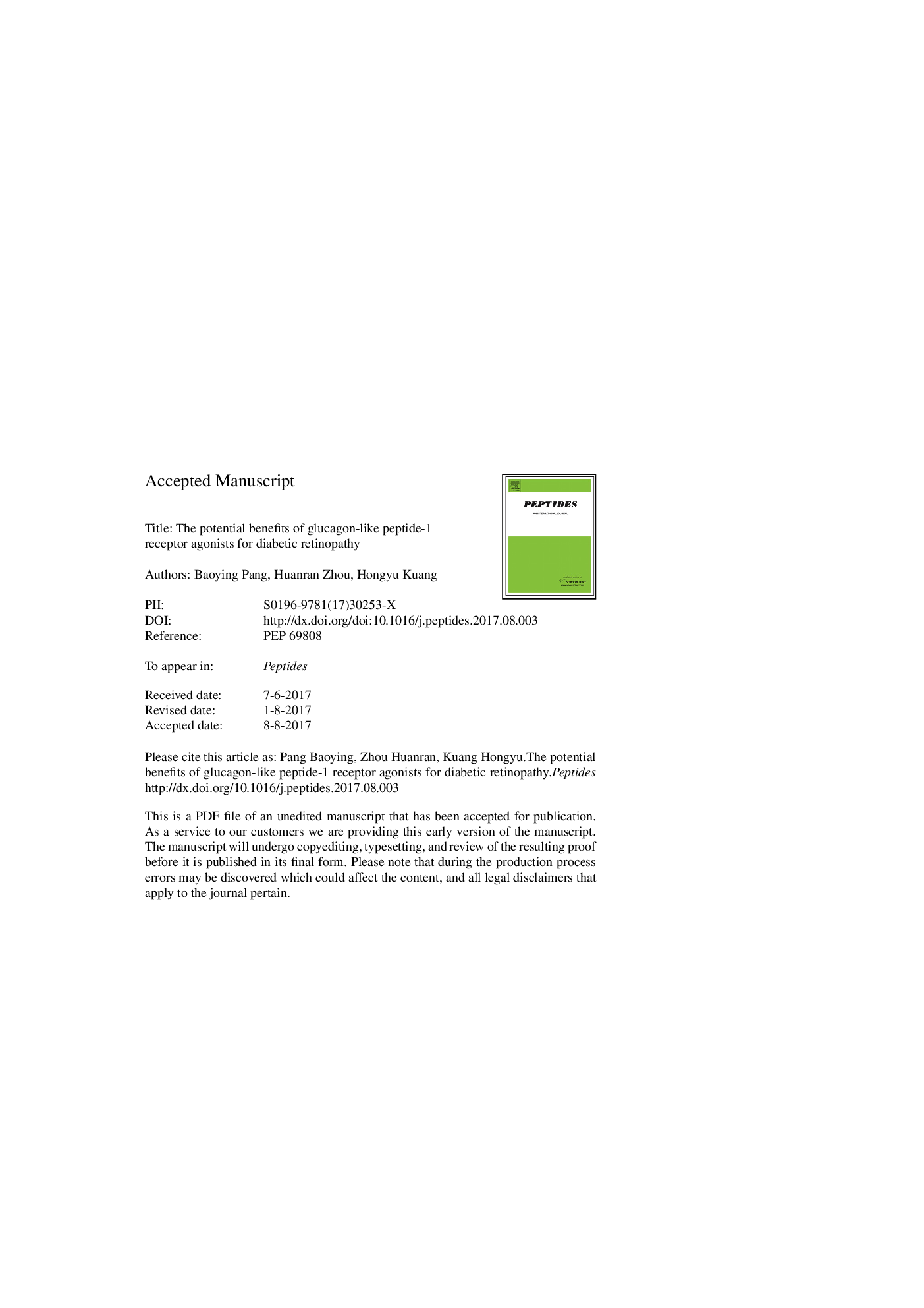| Article ID | Journal | Published Year | Pages | File Type |
|---|---|---|---|---|
| 8347472 | Peptides | 2018 | 11 Pages |
Abstract
For a long time, diabetic retinopathy (DR) has been one of the most severe complications of diabetes. The early treatment of DR is not clearly recognized. The additional benefit of hypoglycemic agents for DR has become a new research field. Glucagon-like peptide-1 receptor (GLP-1R) has been shown to be widely expressed in tissues including retina. Glucagon-like peptide-1 receptor agonists (GLP-1RA) have been generally used in the treatment of diabetic patients. Studies shows that GLP-1RA could inhibit nerve damage by decrease apoptosis of nerve cells and activation of glial cells. In addition, GLP-1RA plays a protective role for tight junction (TJ) and cells of blood retinal barrier (BRB). It also protects retina from BRB damage. In this review, we discuss the potential protective mechanisms of GLP-1RA for DR beyond the hypoglycemic effects.
Keywords
PlGFVCAM-1GLP-1RABRBGLP-1GCLAGEsICAM-1RGCECsOPsROSTJsNerve injuryGlycated albuminGlucagon-like peptide-1 receptor agonistsglucagon-like peptide-1 receptor agonisttight junctionstumor necrosis factor-αDiabetes mellitusdiabetic retinopathyRetinal pigment epithelial cellsretinal ganglion cellEndothelial cellsendoplasmic reticulumplacental growth factorVascular endothelial growth factorVascular Endothelial Growth Factor (VEGF)TNF-αganglion cell layerblood retinal barrierAdvanced glycation end productsIntercellular adhesion molecule 1Vascular cell adhesion molecule 1oscillatory potentialsglucagon-like peptide-1Oxygen species
Related Topics
Life Sciences
Biochemistry, Genetics and Molecular Biology
Biochemistry
Authors
Baoying Pang, Huanran Zhou, Hongyu Kuang,
